(sold for $587.0)
1764, Austrian States, Batthyani, Count Karl. Silver Thaler Coin. 4,000 Struck! He served as ban (viceroy) of Croatia from 1743 to 1756
Mint Year: 1764 Engraver: I. Toda Mint Place: Vienna Mintage: 4,000 pcs. Denomination: Thaler (Convention. Reference: Davenport 1182, KM-2. Condition: Numerous tiny hits (possibly tooled and cleaned in the past) and scratches in fields, otherwise a nice XF! Weight: 27.93gm Diameter: 42mm Material: Silver
Obverse: Daraped and armored military bust of Count Karl of Batthyani, wearing Toison d'or right. Engraver´s signature (I.TODA F.) inside arm truncation. Legend: CAROL . SR . I . PRINC . DE . BATTHYAN . P . IN . U . & . S . COM . AUR : U : E : C : C : P : S : U : S : C :
Reverse: Crowned coat-of-arms of the House of Batthyani, supported by two pegasi, which are holding banners with initials of the Emperor Francis I Stephen (F.I) and Empress Maria Theresia (M.T.). Legend: GEN : C : MAR : U : L : DIM : COL : U : S : C : & R : A : M : A : I : CONS : & S : CONF : M : 1764 .
Batthyány is the name of an old distinguished Hungarian Magnate family. The members of this family bear the title count or countess (Graf/Gräfin) respectively prince or princess (Fürst/Fürstin) Batthyány von Német-Ujvár. A branch of the family (Croatian: Baćan) was notable in Croatia as well, producing several Bans (viceroys) of Croatia in the 16th, 17th and 18th century.
The Batthyány family can trace its roots to the founding of Hungary in 896 CE by Árpád. The family derives from a chieftain called Örs. Árpád had seven chieftains, one by the name of Örs, which later became Kővágó-Örs. In 1398 Miklós Kővágó-Örs married Katalin Battyány. King Zsigmond (Sigismund) gave Miklós the region around the town of Battyán (now called Szabadbattyán) and he took the name Batthyány (lit. "from Battyán"). The family were first mentioned in documents in 1398 and have had their ancestral seat in Güssing in the Austrian region of Burgenland since 1522. There the family meets once a year for a so-called "Familientag" (family gathering). Currently, the family has about 60 name bearers who live mainly in Austria, but also in Hungary, Germany, USA and South America. The family is headed by Prince Laszlo Pascal Batthyány-Strattmann, who lives in Vienna.
In 1570, Boldizsár Batthyány transformed the seat of the family, Güssing, into the center of Protestantism in the region. His descendant Ádám Batthyány (1610–1659), however, was Catholic and founded a Franciscan monastery in Güssing. Lajos Batthyány became the first Prime Minister of Hungary during the Hungarian Revolution of 1848 and was executed in Pest in 1849. After 1945 the Batthyány family's property was largely expropriated in Hungary and other countries under Communist rule, although they retained their property in Austria. Of course the current family members have strong ties to Hungary currently.
Count Karl Josef Batthyány of Németújvár (Hungarian: németújvári gróf Batthyány Károly József, Károly József Batthyány, German: Karl Josef Graf Batthyány, Croatian: Karlo Josip grof Baćan; 28 April 1697, Rechnitz - 15 April 1772, Vienna) was a Hungarian-Austrian general and field marshal. He served as ban (viceroy) of Croatia from 1743 to 1756.
Károly József Batthyány was born 1697 as a son of the Hungarian count Ádám Batthyány. He served in the Austrian army under Prince Eugene of Savoy in the war against the Turks, and participated in the battles in Peterwardein, Temeswar and Belgrade.
He commanded in 1734, as a general Imperial troops at the Rhine against France, and in 1737 against the Turks. From 1739 to 1740, he was the envoy at the Berlin Court, but returned, however, after the outbreak of the First Silesian War with Prussia.
In the War of Austrian Succession (1744), he served again as a corps commander. He faced the French under General Ségur in the Battle of Pfaffenhofen on 15 April 1745. In spite of numerical inferiority, he won a huge victory. Batthyány then united forces with Field Marshal Otto Ferdinand von Abensberg und Traun, defeated the French again and forced them back over the Rhine.
In 1746, he served under the command of Charles of Lorraine in Belgium and took part in the Battle of Rocoux, in 1747. Serving under the command of the Duke of Cumberland, he executed an exemplary withdrawal in Lauffeldt.
After the war, Batthyány was raised to princely rank by Maria Theresia, and later served as an advisor to the crown prince and later Emperor Joseph II of Austria.
Batthyány spent his old age in Vienna, where he died in 1772.

|
Posted by:
anonymous 2017-03-10 |
1 Cent Kingdom of the Netherlands (1815 - )
group has 18 coins / 18 prices
⇑

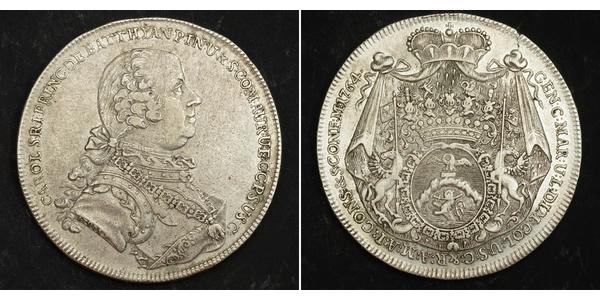







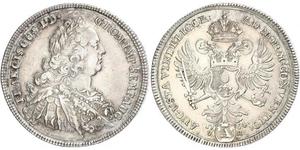


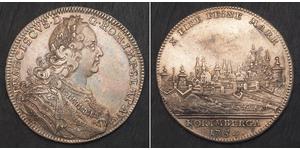
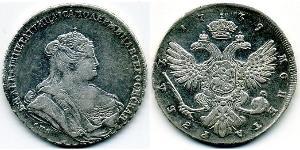


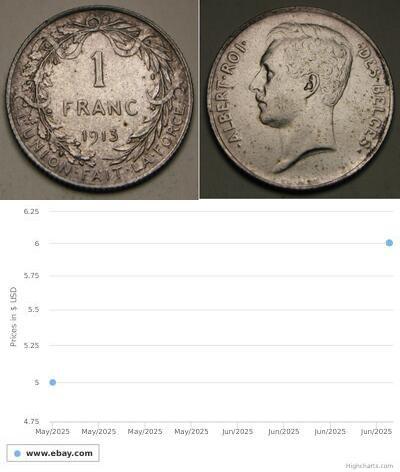
-300-150-3mesHgTy6ZwAAAGPwuFVj7L2.jpg)






